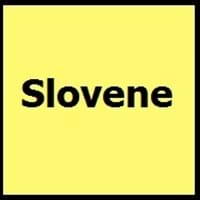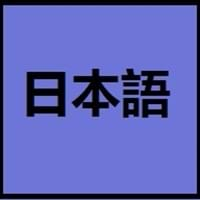Slovene vs Japanese
Countries
European Union, Slovenia
Japan
National Language
Austria, Croatia, Hungary, Italy, Slovenia
Japan
Second Language
Not spoken in any of the countries
Not spoken in any of the countries
Speaking Continents
Europe
Asia, Pacific
Minority Language
Austria, Hungary, Italy
Palau
Regulated By
Slovenian Academy of Sciences and Arts
Agency for Cultural Affairs (文化庁) at the Ministry of Education
Interesting Facts
- The Freising Monuments is the oldest preserved records of written Slovene from 10th century.
- The first Slovene book was printed in 1550.
- In Japanese Language, there are 4 different ways to address people: kun, chan, san and sama.
- There are many words in Japanese language which end with vowel letter, which determines the structure and rhythm of Japanese.
Similar To
Serbo-Croatian
Korean Language
Derived From
Not Available
Not Available
Alphabets in
Slovene-Alphabets.jpg#200
Japanese-Alphabets.jpg#200
Writing Direction
Left-To-Right, Horizontal
Left-To-Right, Horizontal, Top-To-Bottom
Hello
Halo
こんにちは (Kon'nichiwa)
Thank You
Hvala
ありがとう (Arigatō)
How Are You?
Kako se imate?
お元気ですか (O genki desu ka?)
Good Night
Lahko noč
おやすみなさい (Oyasuminasai)
Good Evening
Dober večer
こんばんは (Konbanwa)
Good Afternoon
Dober dan
こんにちは (Konnichiwa!)
Good Morning
Dobro jutro
おはよう (Ohayō)
Please
Prosim
お願いします (Onegaishimasu)
Sorry
Oprostite
ごめんなさい (Gomen'nasai)
Bye
Nasvidenje
さようなら (Sayōnara)
I Love You
Ljubim te
愛しています (Aishiteimasu)
Excuse Me
Oprostite
すみません (Sumimasen)
Dialect 1
Prekmurje Slovene
Sanuki
Where They Speak
Hungary, Slovenia
Kagawa
Where They Speak
Italy
Fukuoka
Where They Speak
Slovenia
kansai
Speaking Population
Not Available
Native Name
Not available
日本語
Alternative Names
Slovenian, Slovenscina
Not Available
French Name
slovène
japonais
German Name
Slowenisch
Japanisch
Pronunciation
[slɔˈʋèːnski ˈjɛ̀ːzik], [slɔˈʋèːnʃt͡ʃina]
/nihoɴɡo/: [nihõŋɡo], [nihõŋŋo]
Ethnicity
Slovenes
Japanese (Yamato)
Language Family
Indo-European Family
Japonic Family
Subgroup
Not Available
Not Available
Branch
Not Available
Not Available
Early Forms
No early forms
Old Japanese, Early Middle Japanese, Late Middle Japanese and Early Modern Japanese
Standard Forms
Slovene
Japanese
Language Position
Not Available
Signed Forms
Not Available
Signed Japanese
Scope
Individual
Individual
ISO 639 6
Not Available
Not Available
Glottocode
slov1268
nucl1643
Linguasphere
53-AAA-f
45-CAA-a
Language Type
Living
Living
Language Linguistic Typology
Not Available
Subject-Object-Verb
Language Morphological Typology
Fusional
Agglutinative, Synthetic
Slovene and Japanese Language History
Comparison of Slovene vs Japanese language history gives us differences between origin of Slovene and Japanese language. History of Slovene language states that this language originated in 972-1093 whereas history of Japanese language states that this language originated in 1185. Family of the language also forms a part of history of that language. More on language families of these languages can be found out on Slovene and Japanese Language History.
Slovene and Japanese Greetings
People around the world use different languages to interact with each other. Even if we cannot communicate fluently in any language, it will always be beneficial to know about some of the common greetings or phrases from that language. This is where Slovene and Japanese greetings helps you to understand basic phrases in Slovene and Japanese language. Slovene word for "Hello" is Halo or Japanese word for "Thank You" is ありがとう (Arigatō). Find more of such common Slovene Greetings and Japanese Greetings. These greetings will help you to be more confident when conversing with natives that speak these languages.
Slovene vs Japanese Difficulty
The Slovene vs Japanese difficulty level basically depends on the number of Slovene Alphabets and Japanese Alphabets. Also the number of vowels and consonants in the language plays an important role in deciding the difficulty level of that language. The important points to be considered when we compare Slovene and Japanese are the origin, speaking countries, language family, different greetings, speaking population of these languages. Want to know in Slovene and Japanese, which language is harder to learn? Time required to learn Slovene is 44 weeks while to learn Japanese time required is 88 weeks.





